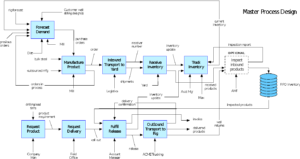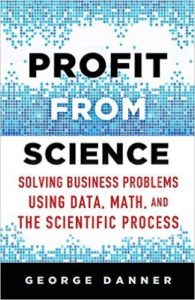Fact-based strategy seeks to cut through the clutter and examine corporate strategy in an objective, systematic, and methodical way by making a “science” of the company and its attributes and dimensions. It is a significant departure from the traditional “let’s gather everyone and a facilitator in a conference room and hash this out” approach. Here’s how:
- Fact-based strategy uses the Scientific Method
Modern science has been solving problems for 24 centuries, and is there

fore the most successful, well-founded method for looking at any complex problem. We use the process of the Scientific Method to systematically decompose the strategy “problem” into its constituent parts clearly, and most often graphically. The output of the sessions include a Hypothesis (Problem Statement), a Qualitative Model, a Quantitative Model, and Analysis.
- Fact-based strategy replaces a facilitator with an expert panel
No one person has all of the perspectives necessary to guide the executive teams through a complex journey. Therefore a panel of 3 to 5 experts is much more effective and engaging for the participants, particularly when disagreements arise.
- Fact-based strategy is based on the “art of the possible”
Time and again, history shows that certain analytical methods combined with good business practices led to durable innovations in strategy—the invention of the fractional jet market, mini-mills in the steel industry, overnight package shipping—all arose by the juxtaposition of analytics, promising technology, and business value. By examining numerous cases of how these innovations came about, participants are inspired to think more broadly than just their own industry.
- Fact-based strategy is not accomplished in one day, but rather in three sessions with a week of “soak time” in between each

It is a bit unrealistic to think that something as important as corporate
strategy can be devised in the space of a single day, or even 2 or more contiguous days. Strategy is a thinking game—it requires thoughtful consideration of all of the angles of a problem. Our 3 sessions are one day each separated by a week in between for necessary contemplation of the issues raised in the proceeding session, and mental preparation for the next.
- Fact-based strategy assumes that the knowledge and experience already inside the talent of the company is sufficient to derive a successful strategy

Most companies do not need extremely expensive strategy consultants to “tell” companies what their strategies should be. Rather, much of the experience and knowledge needed to craft a successful strategy is right there inside the company. What firms lack is the ability to take the collective knowledge, extract it from the Subject Matter Experts, and document it in succinct graphical form for all to understand and critique. Fact-based strategy generates numerous graphical artifacts—diagrams, pictures, as a means to codify institutional knowledge for all to use.
- Fact-based strategy considers technology in parallel to strategy
Strategy first, technology to enable that strategy later. That’s the conventional wisdom. The problem with this point of view is that at times, technology actually creates an opening for a strategy to become feasible. For example, the electric refrigerator greatly transformed a consumer’s ability to store food for long periods of time, supplanting the previous method of storing food with block ice in a wooden cabinet. Ignoring the technology would have more likely led to consideration of how to make the block ice last longer, or getting larger blocks into the cabinet.
- Fact-based strategy places an emphasis on visualizing the future state
A typical fact-based strategy employs a visual simulation model of the strategy at hand. By using visualization, communication of the logic of the strategy to stakeholders outside of the strategy teams is much enhanced and often leads to improved change management.
…
We believe that this approach will result in prodding smart people to rise above their own narrow professional scope to think through what could be possible through counterintuitive combinations of innovations that occur anywhere.
The Output of Fact-Based Strategy
All of the artifacts of the strategy development process—diagrams, documents, databases, and models—are provided to the company along with a summary document. The final reports are written with a bias toward action, and a blueprint for implementation.
What Happens After the Sessions?

The blueprints will precisely define the initiatives that cascade from the strategy. In one
case, for example, the strategy created a requirement to optimize a network of 3 production plants that were currently operating autonomously. The initiative then precipitated the need for a simulation model to show how this could be done.
Where Did The Ideas For Fact-Based Strategy Come From?
Much of the inspiration for fact-based strategy comes from the book Profit from Science, by George E. Danner.
